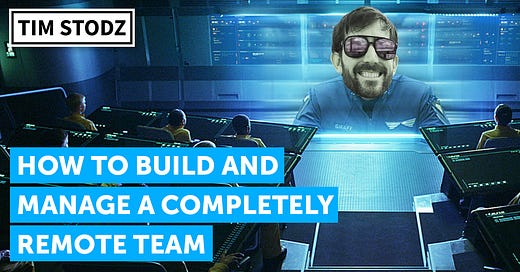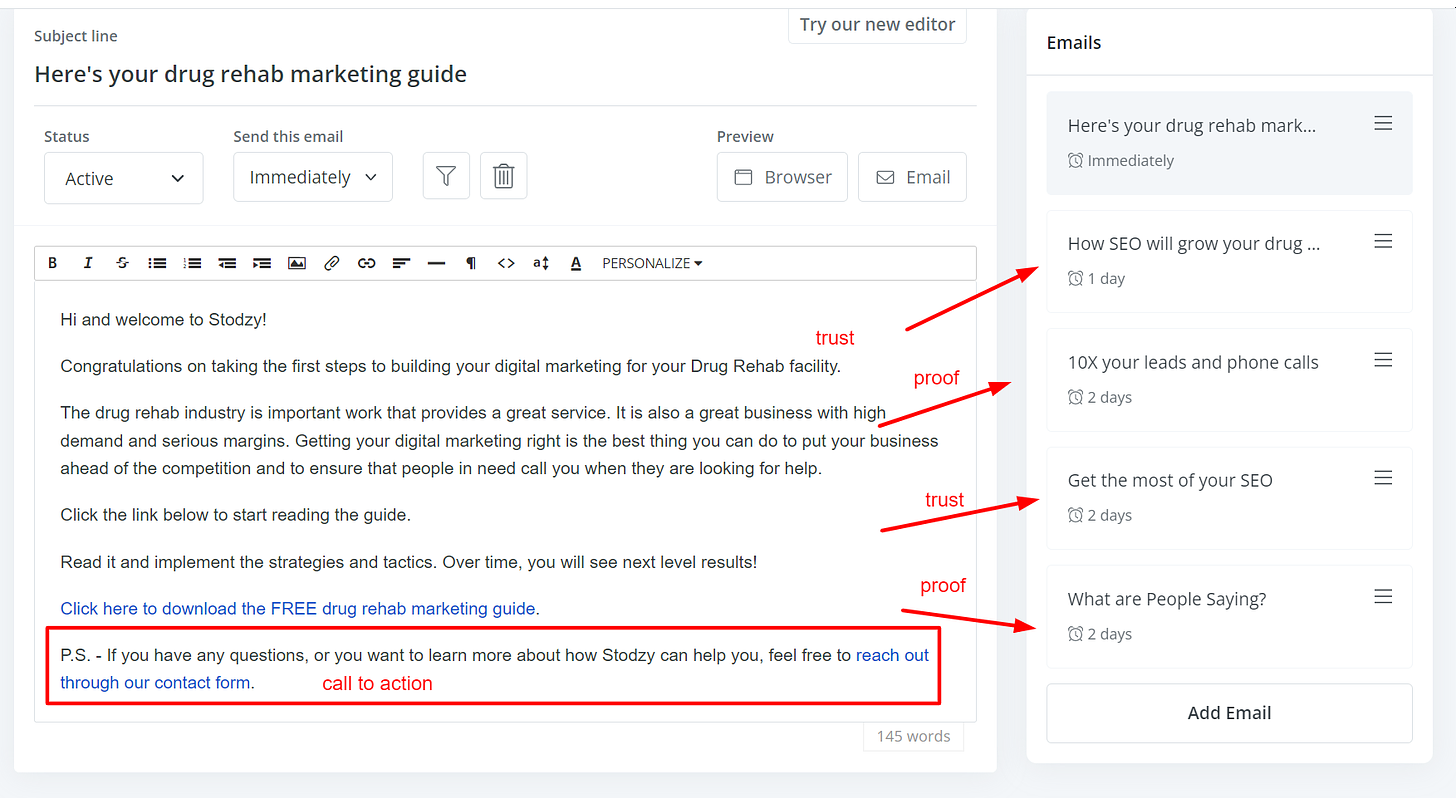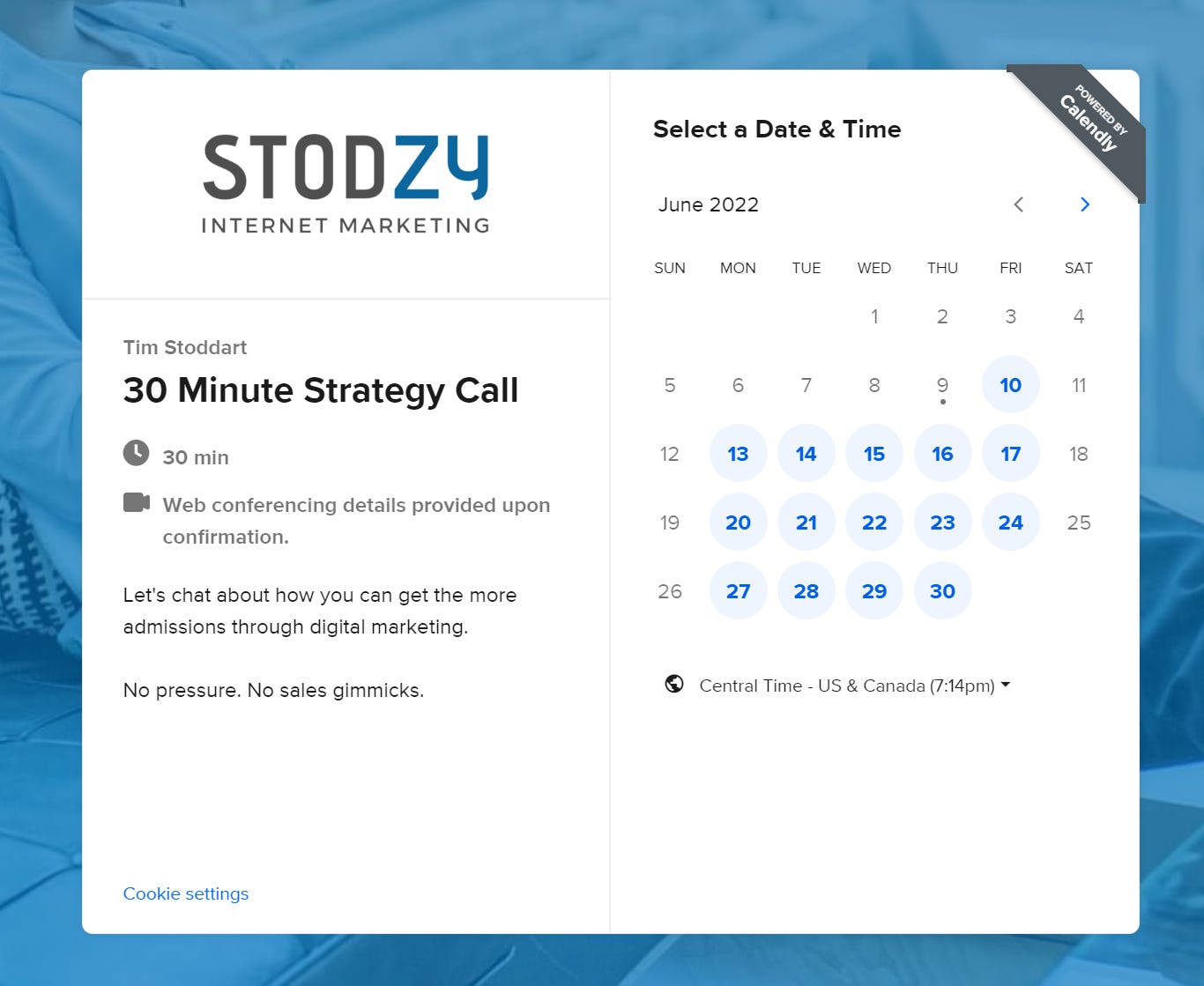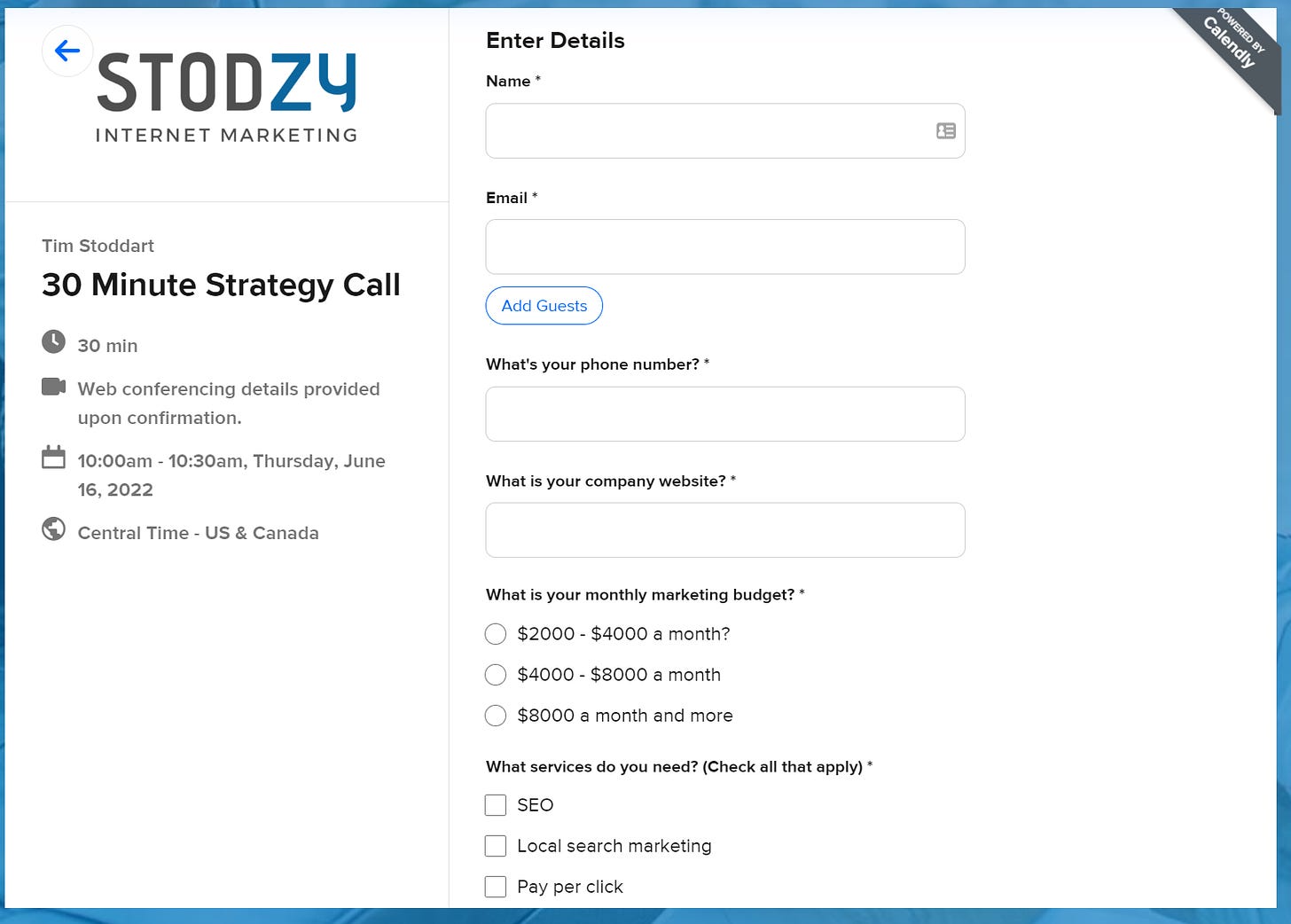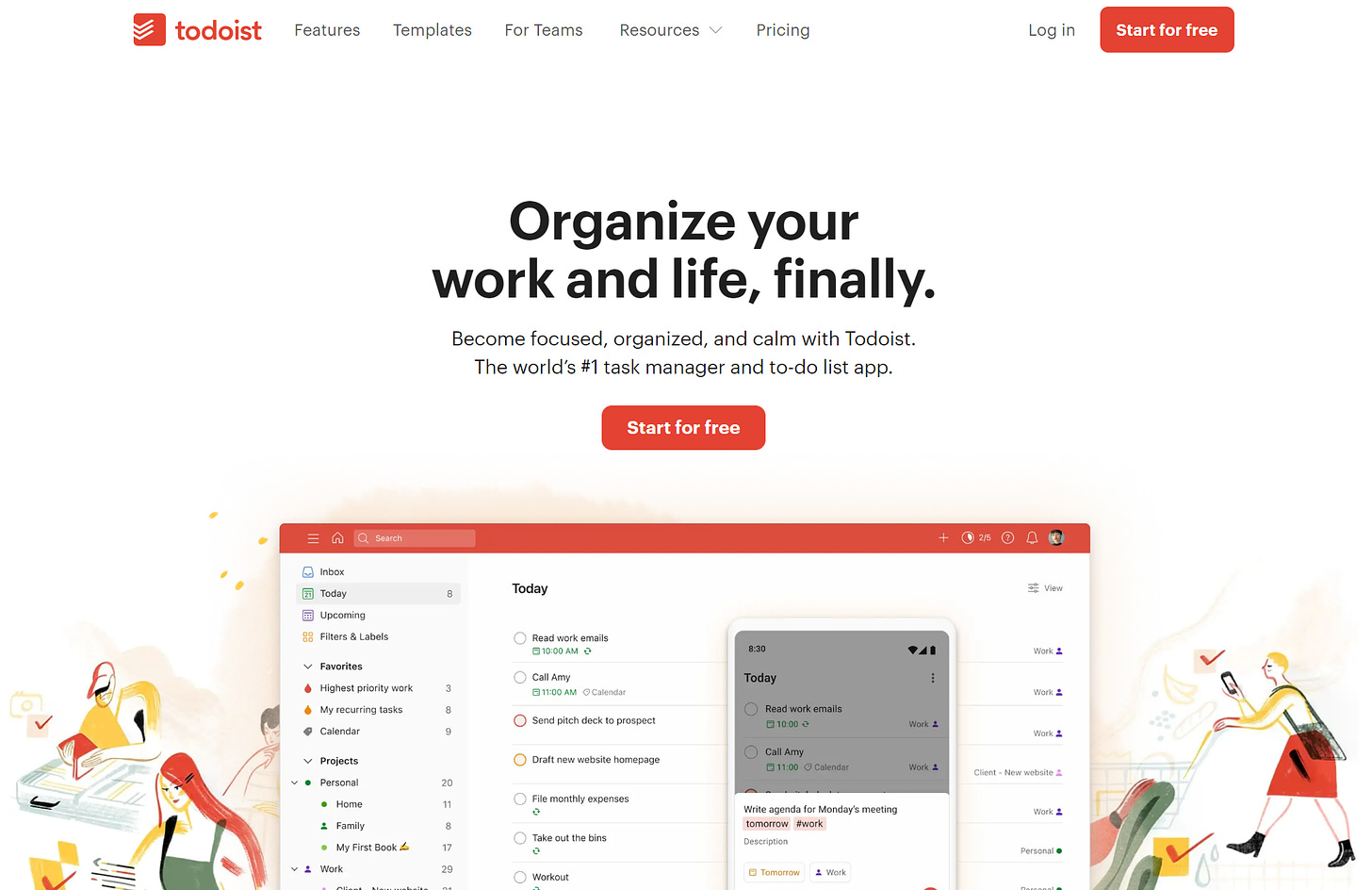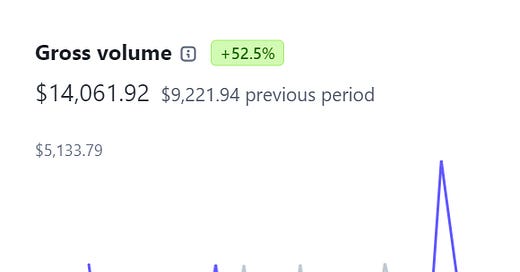
Here's How I Automated My Entire Agency with Employees All Over the World
How do you make life changing money?
You may think the answer is in doing creative work, getting your name out there, and growing your popularity. We all want to be Instafamous and praised.
The reality is far from that. Your success in business is determined by the boring, tedious, and detail oriented processes that make your business run efficiently.
In this week's article, I will document some of the systems and automations that have worked for me. Your business may look totally different than mine, but I hope you take the underlying principles and apply them.
Sales and Marketing is the Oxygen Your Company Survives On
As the leader of your business, you want to be in a position where all of your time is spent on generating new business. My marketing and sales automation have created so much leverage in my company that the business practically generates itself.
Here's how it works.
My sole focus is to generate leads through strategic partnerships and through our digital marketing. Strategic partnerships are pretty straight forward and I wrote about them extensively in last week's email.
For the sake of clarity, I will focus on the digital marketing sales in this week's article.
Generate Traffic > Collect Emails > Display Trust and Proof > Generate a Lead > Close the Sale
Step 1 - Get traffic
A lot of the traffic for Stodzy comes from search marketing. Writing helpful articles on my business website to generate leads is always the first step in any business I build.
I generate traffic to the website and then try to convert that traffic into an email signup.
Step 2 - Email
We generate most of our emails by giving away long form PDFs and guides that our users can read in their own time. These e-book guides work very well.
We generate all our leads and phone calls through email marketing, because it helps us qualify our readers as serious potential clients.
What does our email marketing look like?
Step 3 - Trust / Proof
When someone signs up for our newsletter (which they get every Friday) they are put into an automation.
The email automation rotates back and forth between sending them messages of trust and proof.
Trust means testimonials. Trust means "this is our reputation."
Proof means evidence. "Don't take our word for it, but rather look at the success we've already had."
This is a screen shot of the actual automation.
Step 4 - Generate the Lead
There is a link to book an appointment at the bottom of every email. That link goes to a page with an embedded Calendly link where the prospect can book an appointment with me.
Calendly then puts the appointment on my calendar. In addition, it automatically generates the zoom link and sends the prospect a reminder to reduce the amount of no-shows.
I put required fields in the Calendly form to make sure that I discourage clients who can't afford our services not to fill out the form.
Step 5 - Make the Sale
By this point, most of the hard work is done. My job now is to close the deal. The prospect has already qualified themselves many times over, so with this lead gen system, my closing percentage is very high.
If the deal closes, I send them a contract through HelloSign and the deal gets onboarded.
Onboarding and Account Services
After the deal is signed, it is crucial that the client be properly onboarded.
Onboarding is simple. I don't use any software, but rather we have a standard template that I fill out on Google docs. The document communicates EVERYTHING the other departments need to know
Onboarding is when the workflow leaves the sales and marketing department. Once I fill out the onboarding, I'm done and there's nothing left for me to do. I can wipe my hands clean and move on to the next one.
Here are the fields that we fill out for onboarding.
name
phone number
email
billing address
url
address
overview of business (this is usually a few paragraphs where I explain everything)
what services are we providing
does the client need a new website
does the client need ppc?
what goals are we expected to mee?
how are we measuring those goals?
As soon as I fill out the doc, I submit the doc into slack. Slack notifies everyone, and the different departments can get to work.
Next, the onboarding doc triggers the account rep to book a meeting
When the onboarding doc is submitted, the account services team reviews it and immediately sends an email to the client to book a meeting.
This meeting is important because in the agency business, the meaningful profit generation is a result of keeping your clients for a long period of time.
We typically keep our clients for years, and a big reason for this is because we have built personal and professional relationships with our clients. No matter how big we get, we ALWAYS invest in account services reps who have the sole responsibility of making sure the client knows what's happening within their account.
All account services issues are communicated with slack. We only talk in the account services slack channel if there is a problem.
So the less that happens in slack, the better.
The entire purpose of the sales and onboarding automation is to make it so the client can transition from sales and marketing into account services as seamlessly as possible.
If a client gets stuck here, it will be very detrimental to the lifecycle of the client.
The Relationships Between Strategy and Project Management
At this point, the sales and marketing have closed the deal and account services has built a relationship with the client.
Those are "front end" departments, which means it is the work people see. The back end is where the rubber meets the road, because the back end departments facilitates the processes and the work which generates the results that we get paid for.
We like to define our product as "workflow." Our workflow is the combination of what we do in the way that we do it. We like to think of workflow as the tangible product we sell.
There are two departments that generate our workflow.
There is ...
The strategy department - This is the team that does the research and decides what actions we need to take for our clients to get results.
The project management department - This is the team that executes on the work that needs to get done.
For my business, these two departments need to work autonomously, because the two departments require completely different skill sets and have very different typical work days.
The strategy team doesn't want to be bothered. I never want to see too many slack notifications from strategy. Their job is to focus, do the research, and deliver on the best possible strategy that will create the best results for our clients.
Project management is the opposite, because it requires a lot of communication. Project management needs to be constantly communicating with each other so that the work gets done with perfection, efficiency, and with the fewest possible mistakes.
In addition, the project management team needs a way to communicate with the strategy team, because strategy determines what gets done.
So how do we create a communication mechanism between two departments that aren't allowed to physically talk to each other?
Here's how we did it.
Strategy Documents EVERYTHING Trough their "Client Sheet."
Every client has a folder. Every folder consists of the important information that we need. Perhaps the most important piece of information in the client file is the client sheet.
It has taken us years to build and perfect our client sheet template. This spread sheet is used the exact same way, for every client. The spread sheet gives the strategy team the structure to create the site maps, audit the site, keep notes of what he or she is thinking and then assign the next steps to project management.
For this, we use Google sheets.
One of the tabs in our client sheet is a "to do" tab.
In this tab, strategy creates the assignment and in addition, documents notes for WHY they are creating the assignment. The documentation is important because it allows us to forget what we've done and why we've done it, so we can always stay focused on what's in front of us.
If we ever see something in our work that we don't understand, we can always go back and check the notes. These reminders to ourselves are very helpful.
Project Management Passes the Information into ToDoIst
Through the todo tabs, strategy and project management can talk to each other without ever needing to "talk" to each other.
The asynchronous communication system between these two departments allows for strategy to sit in their quiet dark room while project management is buzzing and alive.
Once the assignment gets passed from strategy to project management, the tasks get assigned to all the sub departments. For this, we use an amazing software called ToDoIst.
Site note** - Todoist has been a game changer. It's so simple, direct, to the point and exactly what we need. It's way better than Asana or Monday.com.
Here's how it works ...The main task is assigned and subtasks are assigned underneath the main task
The sub tasks can be created and marked as complete without checking the main task as complete.
The subtasks are the tasks that help the main task flow through departments.
For instance, let's imagine we have a new piece of content to write. The main task might look something like "Publish article X on Y website." That task will have instructions in the description.
But then the sub tasks would flow the main task through the departments. So there would be a sub task for the writing team, then a sub task for the editing team, then a sub task for the optimization team, then a subtask for the publication team.
Every time a subtask gets marked as complete, it notifies the next department in the line. Once all the sub tasks are completed, the main task kicks back to project management so that the manager can look it over and mark the final main task as complete.
Automation is the Key to Profitability
There are many other steps to our automations. In order to explain every single process, I would need to write 10,000 words and go through all the departments and sub departments very carefully.
I hope that by observing the high level automations, you can see how systems and software can "transfer" your workflow from one department to another without bottlenecking or breaking.
My entire agency could function without people talking to each other. Every department is autonomous, with it's own set of efficiency and accountability principles. With that said, every department has an established communication mechanism to adjacent departments that allows them to be in synch with each other.
It is these systems and processes that create the margins in your business. With the proper automations, you're able to focus your time on generating new business.
That's why I'm able to write articles, build my social media profiles, create a podcast, and still close deals while maintaining my role as CEO of a multi 7 figure media conglomerate
I realize these subject matters are dry and boring. But if you get this right, it frees you up to do the creative work that you truly want to do. In addition, it frees you up to do the creative work that generates the money that goes into your bank account.
Skills and work will make you a living, but systems and automations will make you a fortune.

